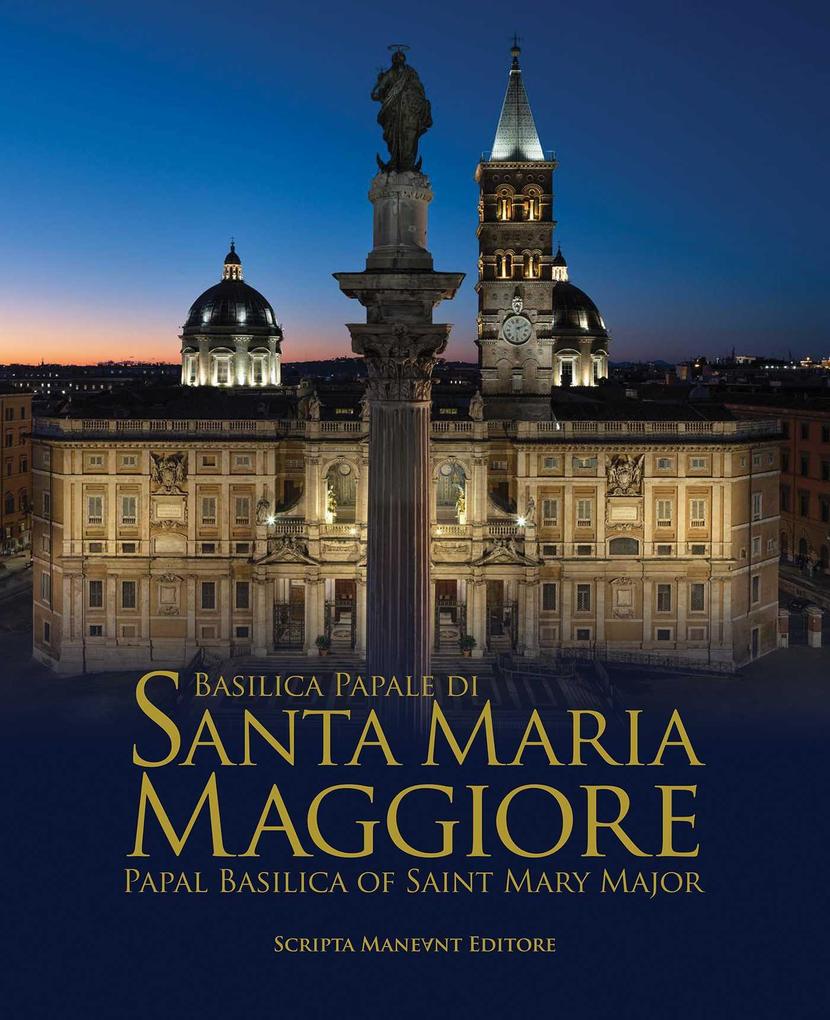
Zustellung: Do, 31.07. - Mi, 06.08.
Versand in 3-4 Wochen
VersandkostenfreiBestellen & in Filiale abholen:
For the first time in its centuries-long history, The Basilica of Santa Maria Maggiore is presented here in never-before-seen gigapixel and 1:1 scale photography. Text in English and Italian.
The Basilica of Santa Maria Maggiore is the only patriarchal basilica of the four in Rome to have retained its paleo-Christian structures. The Basilica dates back to 425 and in this elegant and triumphal photographic masterpiece accomplished at the height of today’ s technology, we can admire in detail the grandeur of all its artistic details: the mosaics of the nave; the ceremonial arch dating to the pontificate of Pope Sixtus III (432-440); those of the apse made at the behest of Pope Nicholas V (1288-1292); the Cosmatesque floor; the coffered ceiling designed by Giuliano da San Gallo; the Nativity scene by Arnolfo di Cambio; the High Altar by Ferdinando Fuga; the Borghese, Cesi, Sforza, and Sistine Chapels; and the Crucifix and St. Michael chapels by Luigi Valadier.
The Basilica is Pope Francis' final resting place.
Tradition has it that the Virgin Mary herself inspired the choice of the Esquiline Hill for the church’ s construction. Appearing in a dream to both the Patrician John, the landowner of the Esquiline Hill, and Pope Liberius, she asked that a church be built in her honor on a site she would miraculously indicate.
Text in English and Italian.
The Basilica of Santa Maria Maggiore is the only patriarchal basilica of the four in Rome to have retained its paleo-Christian structures. The Basilica dates back to 425 and in this elegant and triumphal photographic masterpiece accomplished at the height of today’ s technology, we can admire in detail the grandeur of all its artistic details: the mosaics of the nave; the ceremonial arch dating to the pontificate of Pope Sixtus III (432-440); those of the apse made at the behest of Pope Nicholas V (1288-1292); the Cosmatesque floor; the coffered ceiling designed by Giuliano da San Gallo; the Nativity scene by Arnolfo di Cambio; the High Altar by Ferdinando Fuga; the Borghese, Cesi, Sforza, and Sistine Chapels; and the Crucifix and St. Michael chapels by Luigi Valadier.
The Basilica is Pope Francis' final resting place.
Tradition has it that the Virgin Mary herself inspired the choice of the Esquiline Hill for the church’ s construction. Appearing in a dream to both the Patrician John, the landowner of the Esquiline Hill, and Pope Liberius, she asked that a church be built in her honor on a site she would miraculously indicate.
Text in English and Italian.
Inhaltsverzeichnis
Editorial Note Federico Ferrari Foreword Card. Rolandas Makrickas Introduction Andreas Raub THE BASILICA “ Virgin Mary, to You I, Sixtus” . The Basilica of Sixtus III (432-440) Sible De Blaauw Locus mirabilis. Nicholas IV (1288-1292) at Santa Maria Maggiore Andreas Raub The Nativity Scene by Arnolfo di Cambio Sante Guido Snow, Marble, Gold. The Transformation of the Basilica in the Fifteenth Century Arnold Nesselrath The Sforza and Cesi Chapels Vitale Zanchettin The Chapel of Sixtus V (1585-1590). From Family Mausoleum to Monumental Reliquary Patrizia Tosini The Chapel of Paulus V (1605-1621). Throne Room of the Virgin and Gateway to Heaven Fabio Barry Benedict XIV (1740-1758). “ A most felicitous outcome” Elisabeth Kieven The Basilica from the Nineteenth to Twenty-First Centuries Sante Guido THE POLO MUSEALE LIBERIANO Introduction Andreas Raub The Archaeological Area Olof Brandt The Faç ade Mosaics Andreas Raub The Chapter House Andreas Raub The Museum Andreas Raub Bibliography
Mehr aus dieser Reihe
Produktdetails
Erscheinungsdatum
29. Januar 2025
Sprache
italienisch, englisch
Seitenanzahl
438
Reihe
Scripta Maneant
Herausgegeben von
Andreas Raub
Übersetzung
Fabio Barry
Verlag/Hersteller
Produktart
gebunden
Gewicht
2714 g
Größe (L/B/H)
309/251/35 mm
ISBN
9791280717146
Entdecken Sie mehr
Bewertungen
0 Bewertungen
Es wurden noch keine Bewertungen abgegeben. Schreiben Sie die erste Bewertung zu "Basilica papale di Santa Maria Maggiore-Papal Basilica of Saint Mary Major" und helfen Sie damit anderen bei der Kaufentscheidung.
















